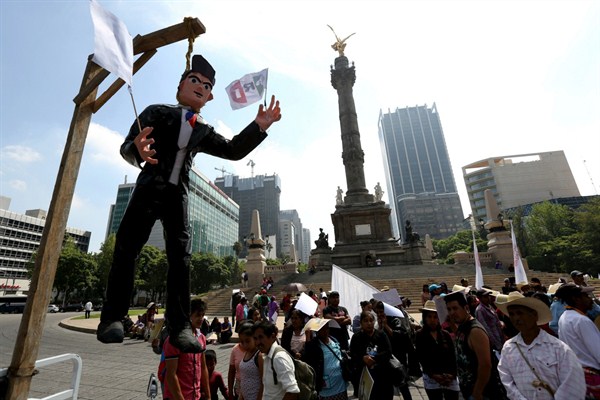MEXICO CITY—When President Donald Trump announced his willingness to renegotiate the North American Free Trade Agreement in May, having previously vowed to withdraw the United States from the pact, officials in Mexico and Canada scrambled to rescue a deal that advocates argue has produced overwhelmingly positive benefits for all three members. Indeed, many believe that the talks, which began in Washington in August and will continue through the end of the year, represent a historic opportunity to not only save NAFTA, but also revamp the agreement for the 21st century.
Yet on the same day that the negotiations began earlier this month, thousands of unionized Mexican workers streamed along Reforma Avenue in downtown Mexico City to protest the very deal that their government is fighting to defend. Carrying banners demanding a referendum on any revised agreement, they echoed the protests that had greeted the signing of NAFTA 25 years ago. It was a reminder, if any were needed, that although the trade agreement is vital to Mexico’s economy—80 percent of Mexican exports go to the U.S. market—NAFTA continues to serve as a symbol of deep inequality in the country.
While supporters credit NAFTA with transforming Mexico into a manufacturing giant and burgeoning tech hub, its critics say the agreement has only widened the gap between the “two Mexicos,” with an increasingly industrialized and middle-class north and a south that is still largely rural and impoverished. The reality, of course, is more complicated, and illustrates the need for wider reform in Mexico before the full benefits of NAFTA can be felt. Yet the path is fraught with obstacles.

